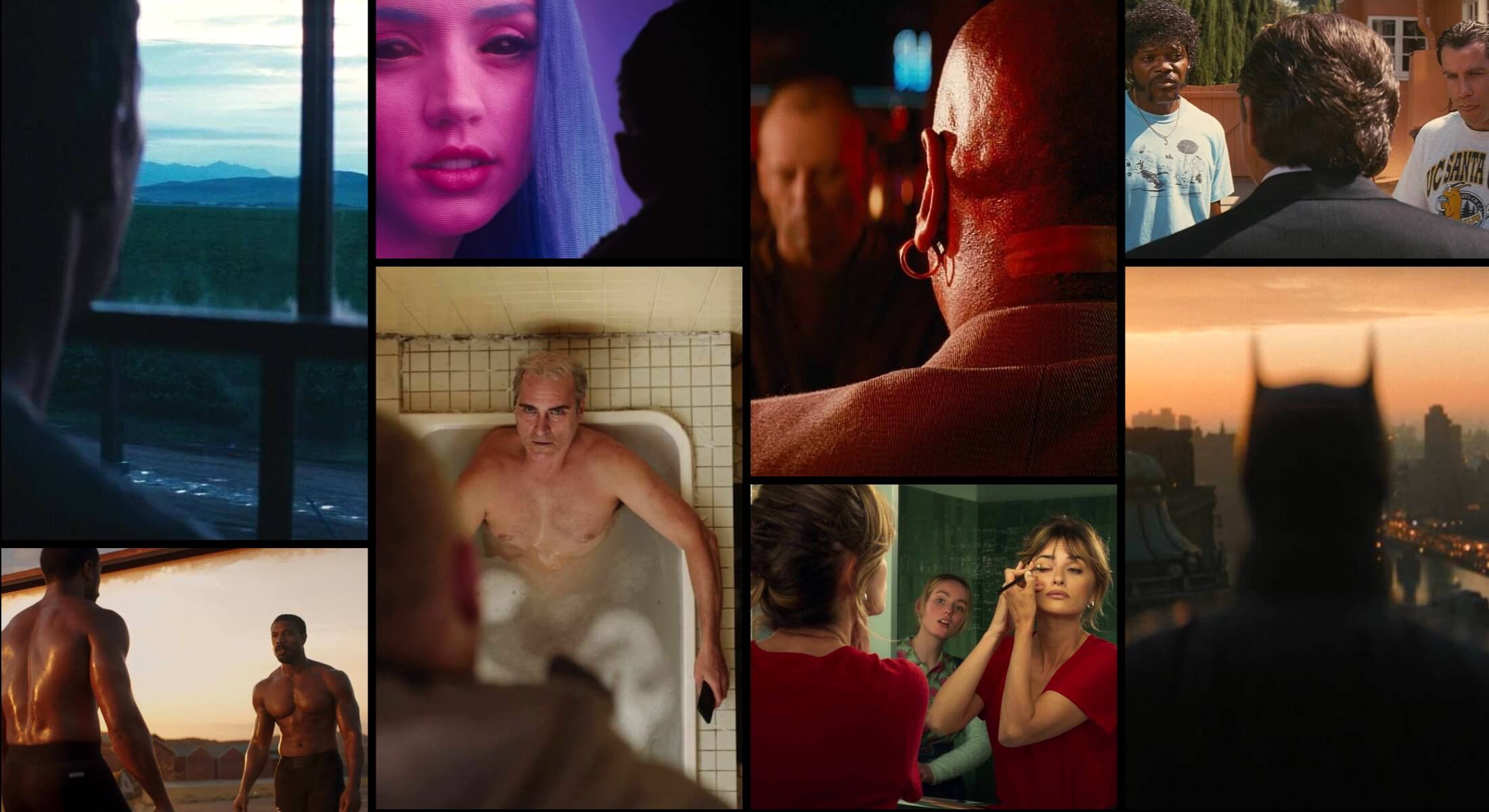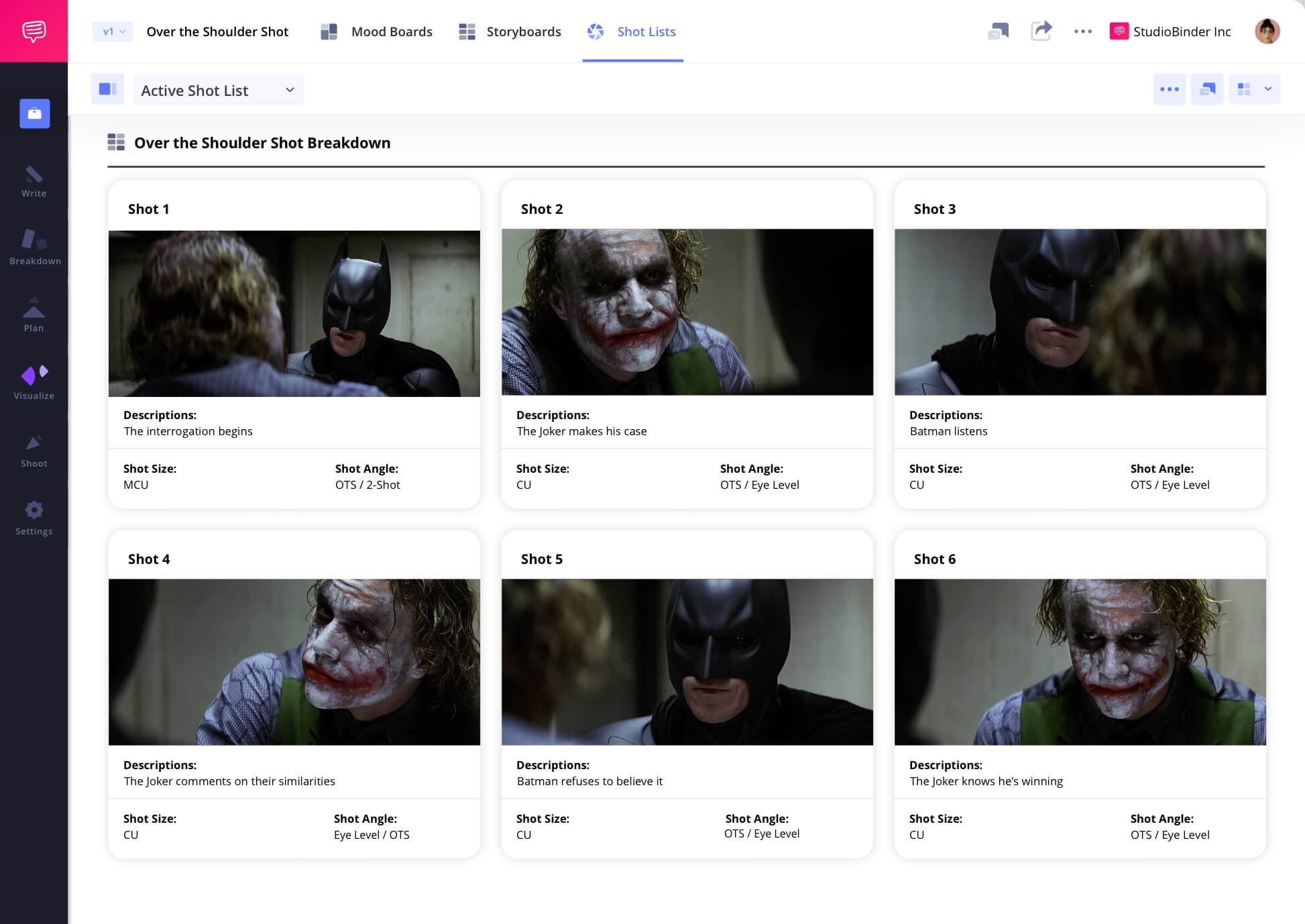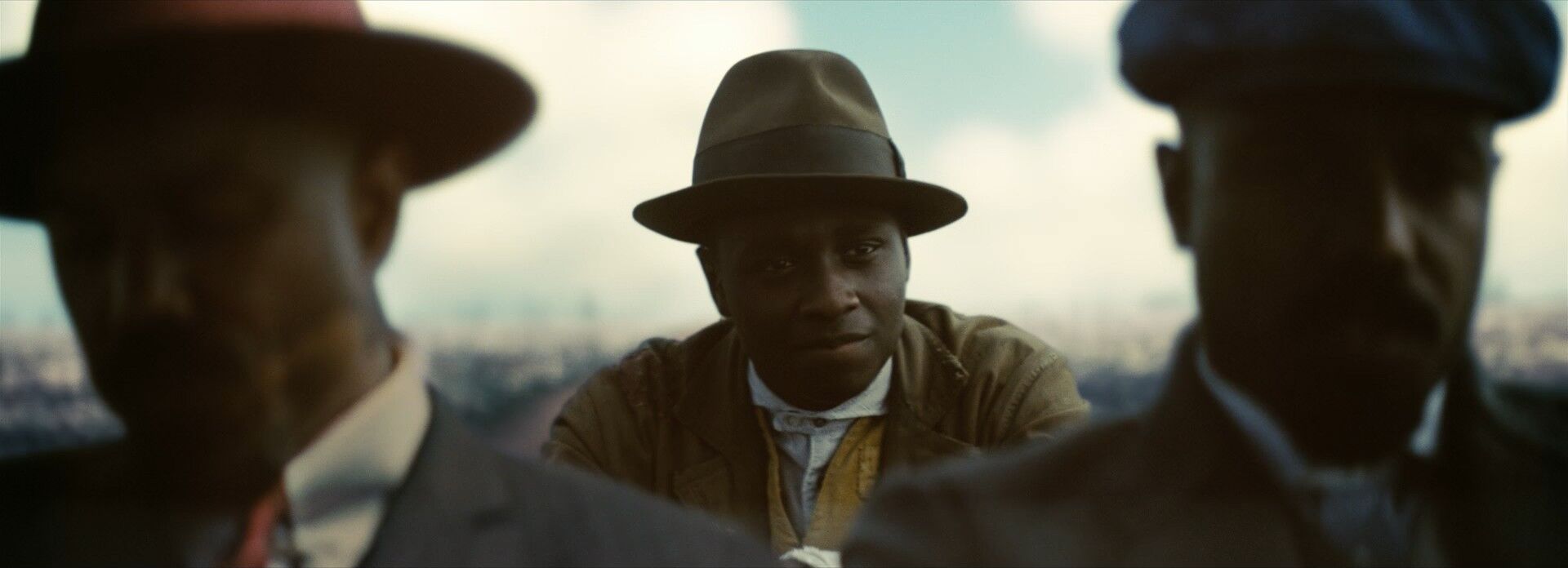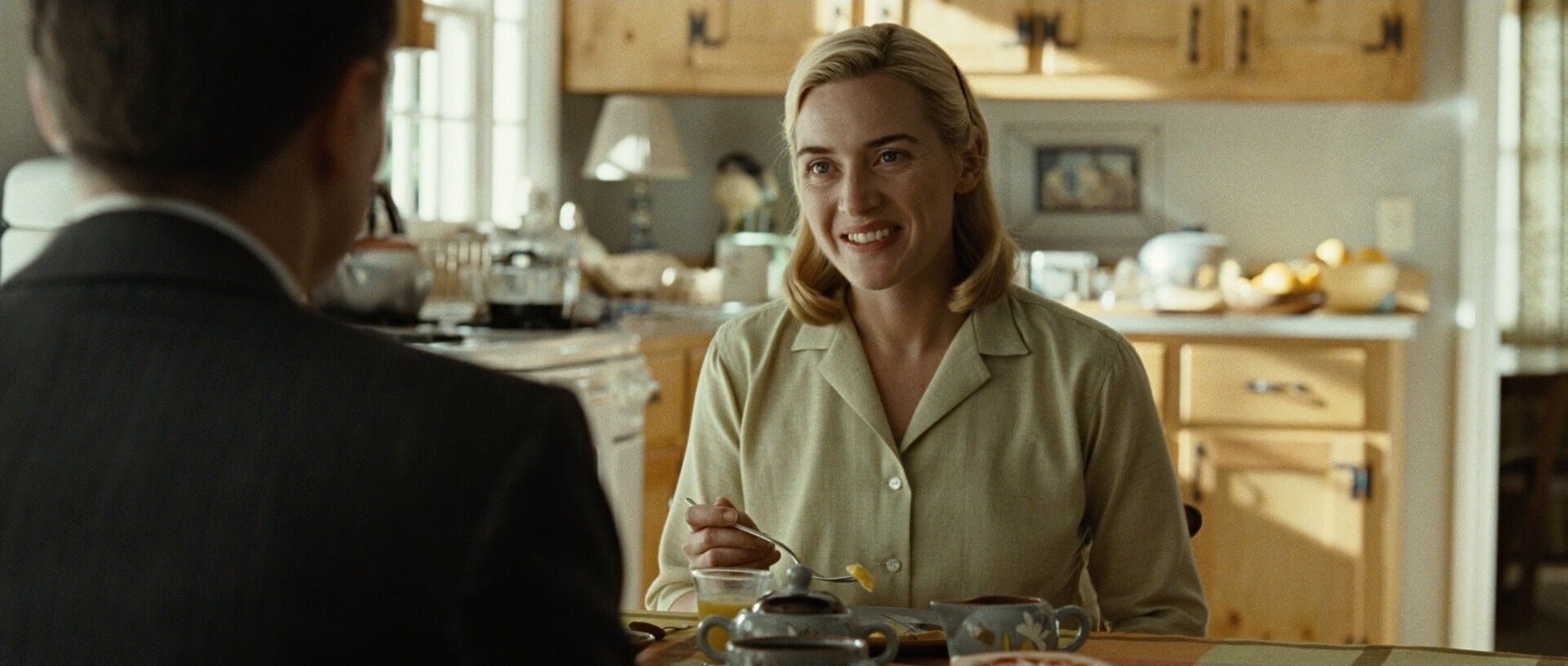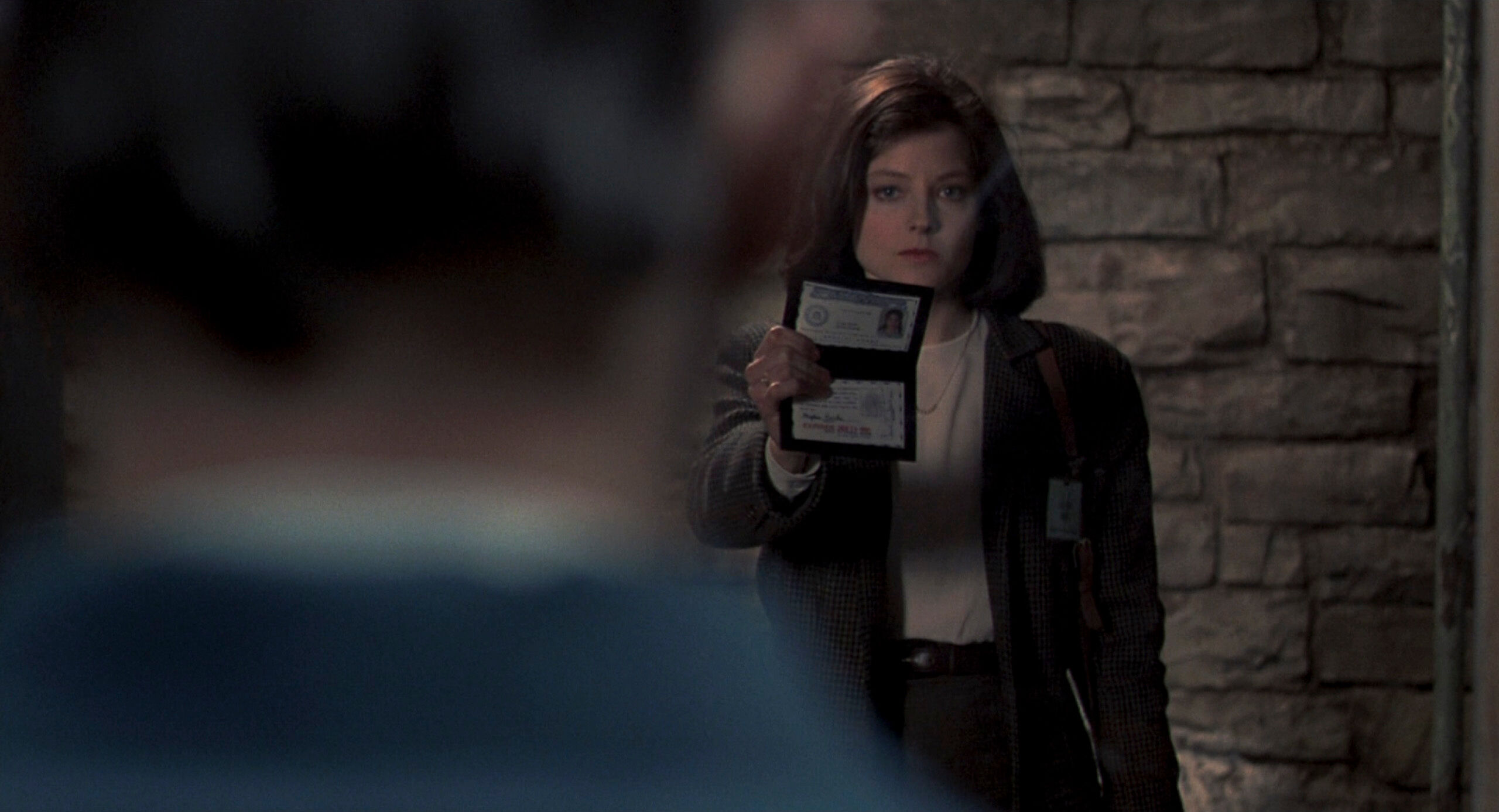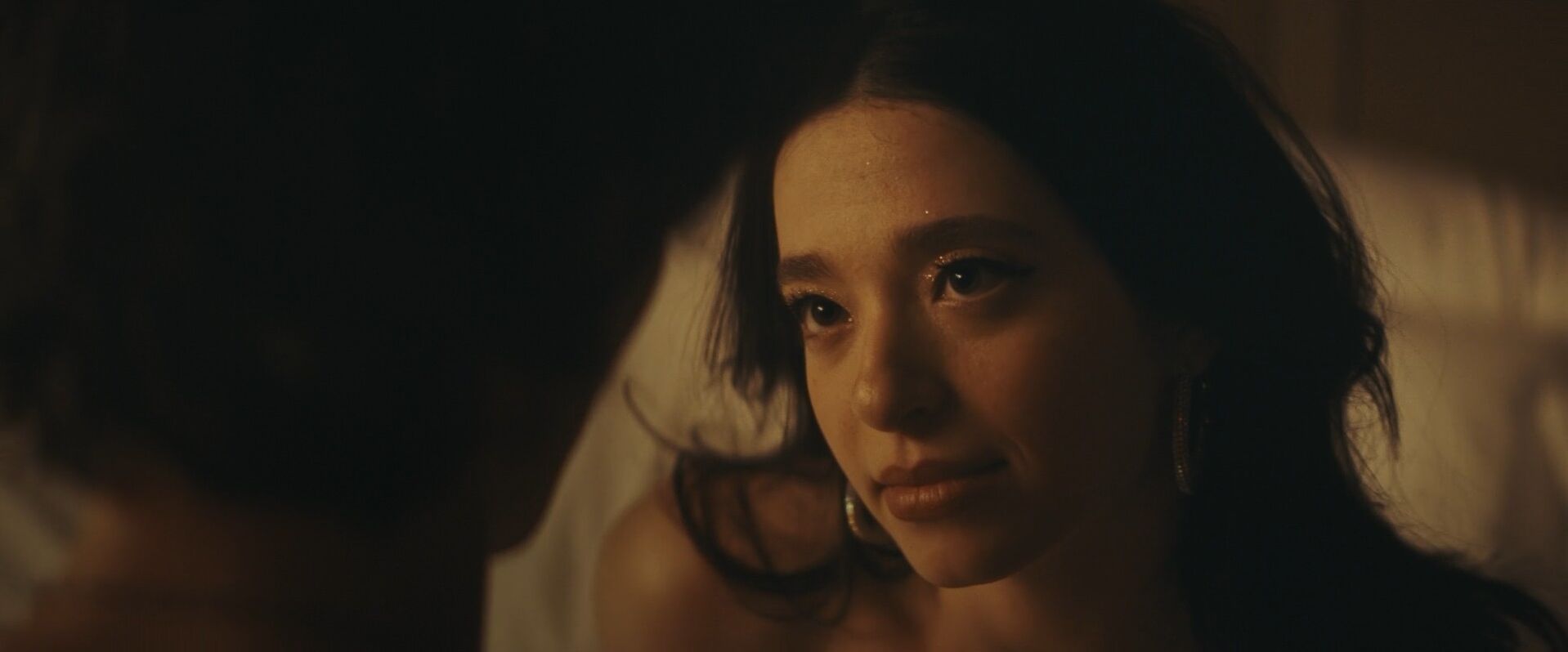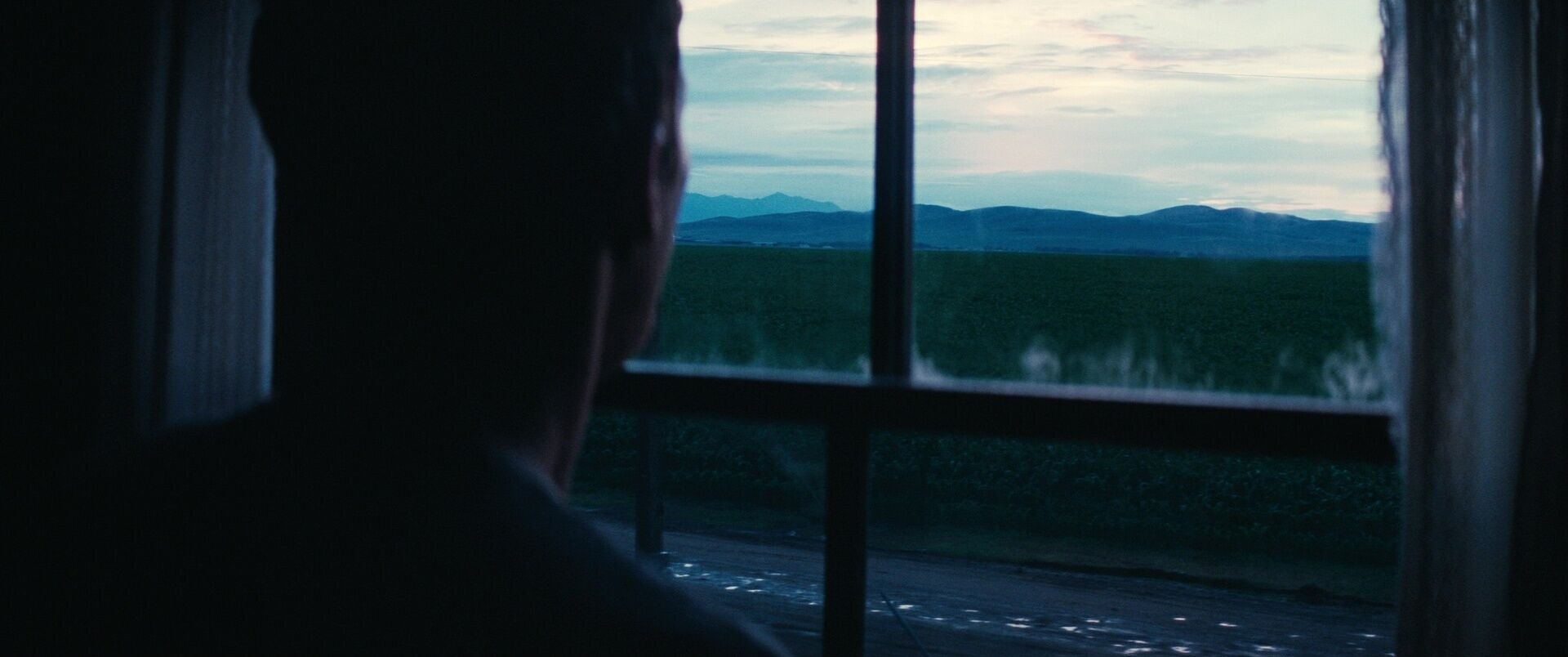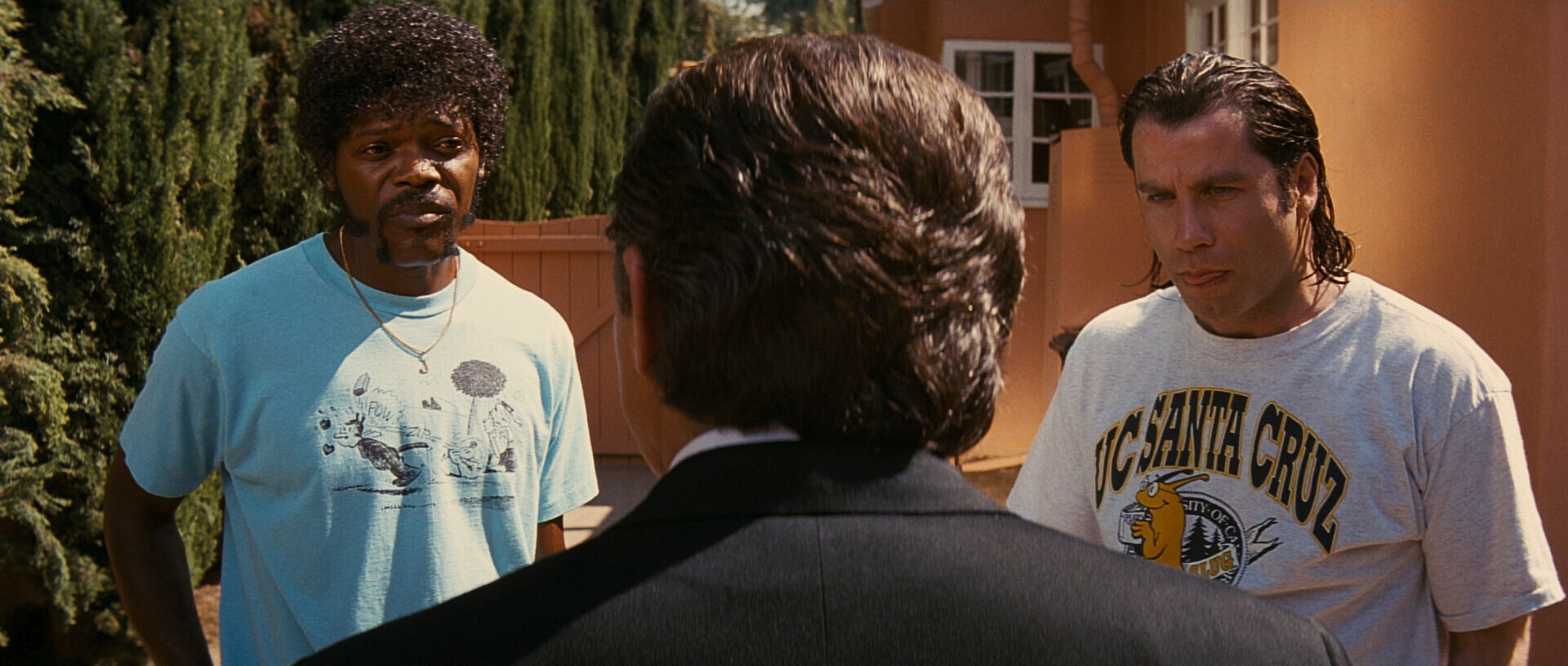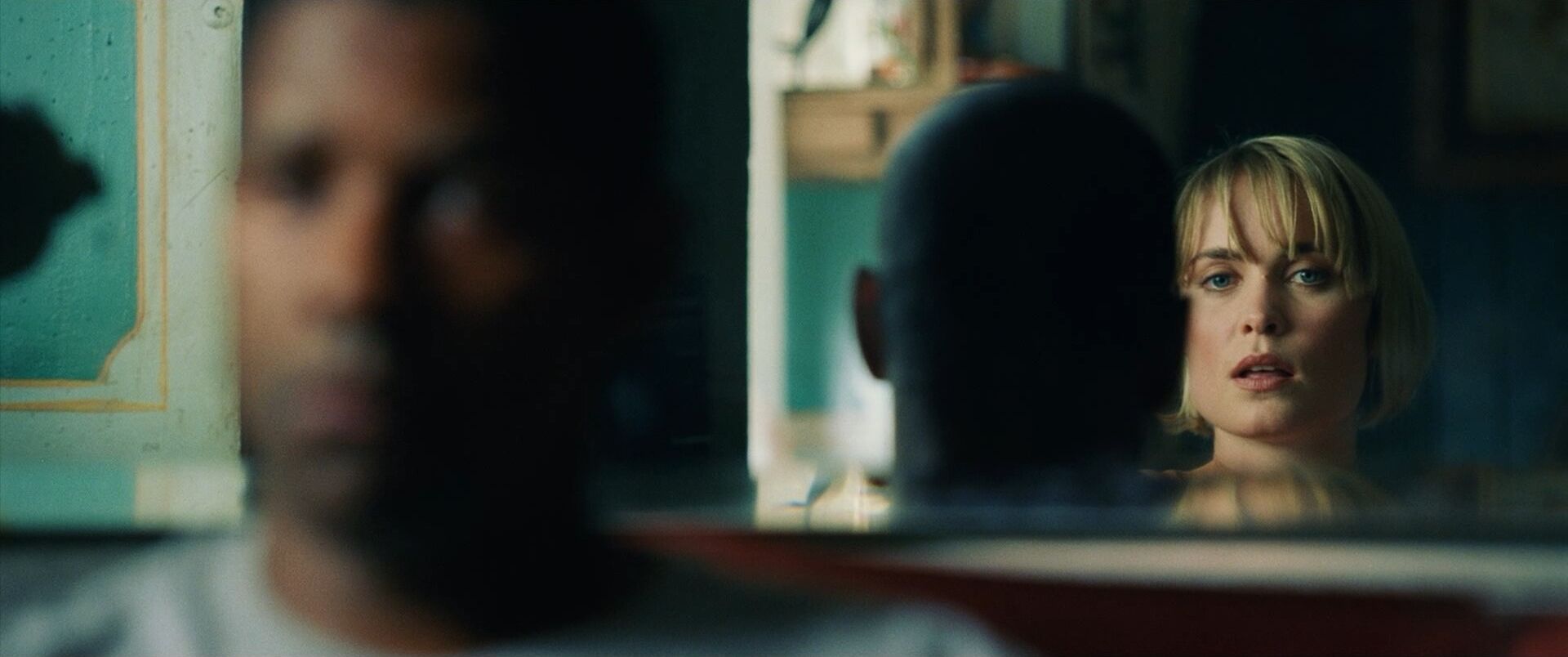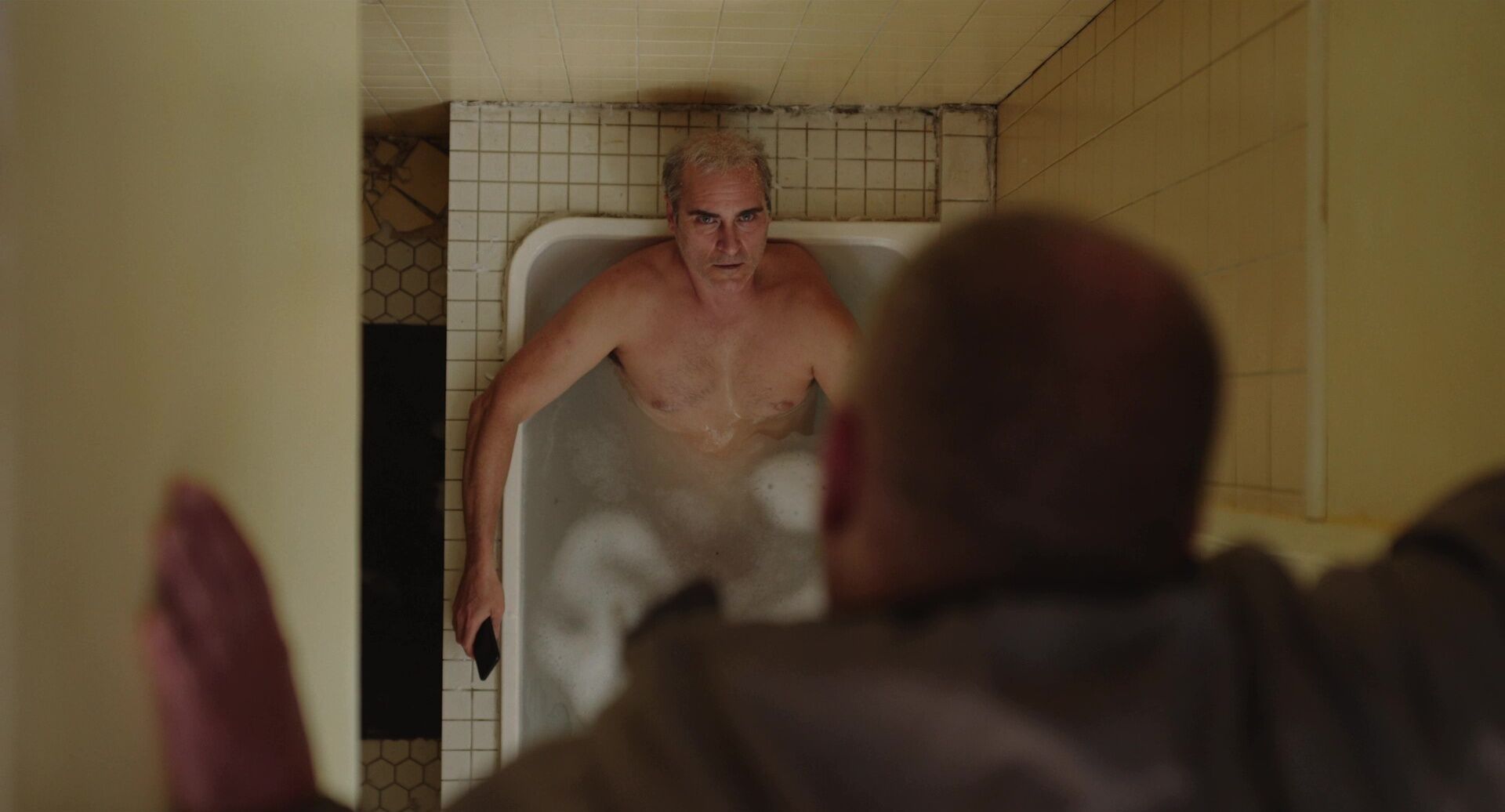Over-the-shoulder shot definition
What is an over-the-shoulder shot?
An over-the-shoulder shot frames a subject from behind another character, including the back of the head and shoulder in the foreground (typically out of focus). This perspective is one of the most common framing devices for conversation scenes.
For a deeper dive into this classic framing technique, visit our full guide to over-the-shoulder shots, packed with visual examples and scene breakdowns.
Filming OTS shots
Over the shoulder shot examples
Over-the-shoulder shots are everywhere in film and television, but their impact often goes unnoticed. Studying how different directors use this framing can reveal its subtle influence on tone, tension, and character relationships. Take a look through this curated gallery of over-the-shoulder shots to see the technique at work in a variety of contexts.
Grounds the viewer in character perspective
Enhances dialogue-driven scenes
Highlights power dynamics
Builds intimacy
Uses
What does an over the shoulder shot in film do?
Over-the-shoulder shots may seem routine, but they’re a staple of cinematic language for a reason. By placing the viewer just behind a character, this framing subtly shapes how we experience dialogue and relationships. Whether used in conversation or confrontation, it draws us into the moment with precision. Here are a few storytelling uses:
Subjectivity
We see the scene from Character A’s vantage point without breaking the fourth wall, aligning the viewer with their emotional experience.
Control
Framing from behind Character A suggests dominance over the person they’re facing, especially when they are larger in the frame.
Connection
The shot places us between two characters as if we were part of the conversation, visually reinforcing intimacy or tension in their interaction.
Revelation
An over-the-shoulder shot can guide when and how information is revealed to the audience, as when a character suddenly appears in a scene.
OTS shot differences
Over the shoulder shot vs two shot
Over-the-shoulder shots and two shots are both used to frame interactions between characters, but they serve different functions.
An over-the-shoulder shot places the camera behind one character, showing part of their head and shoulder in the foreground while focusing on the other character. It emphasizes perspective, aligning the viewer with one character’s point of view.
A two shot, in contrast, frames both characters within the same composition, often side by side. It typically lets us see the facial expressions of both characters, rather than just one. All over-the-shoulder shots involve two characters, but not all two shots are over-the-shoulder, per se.
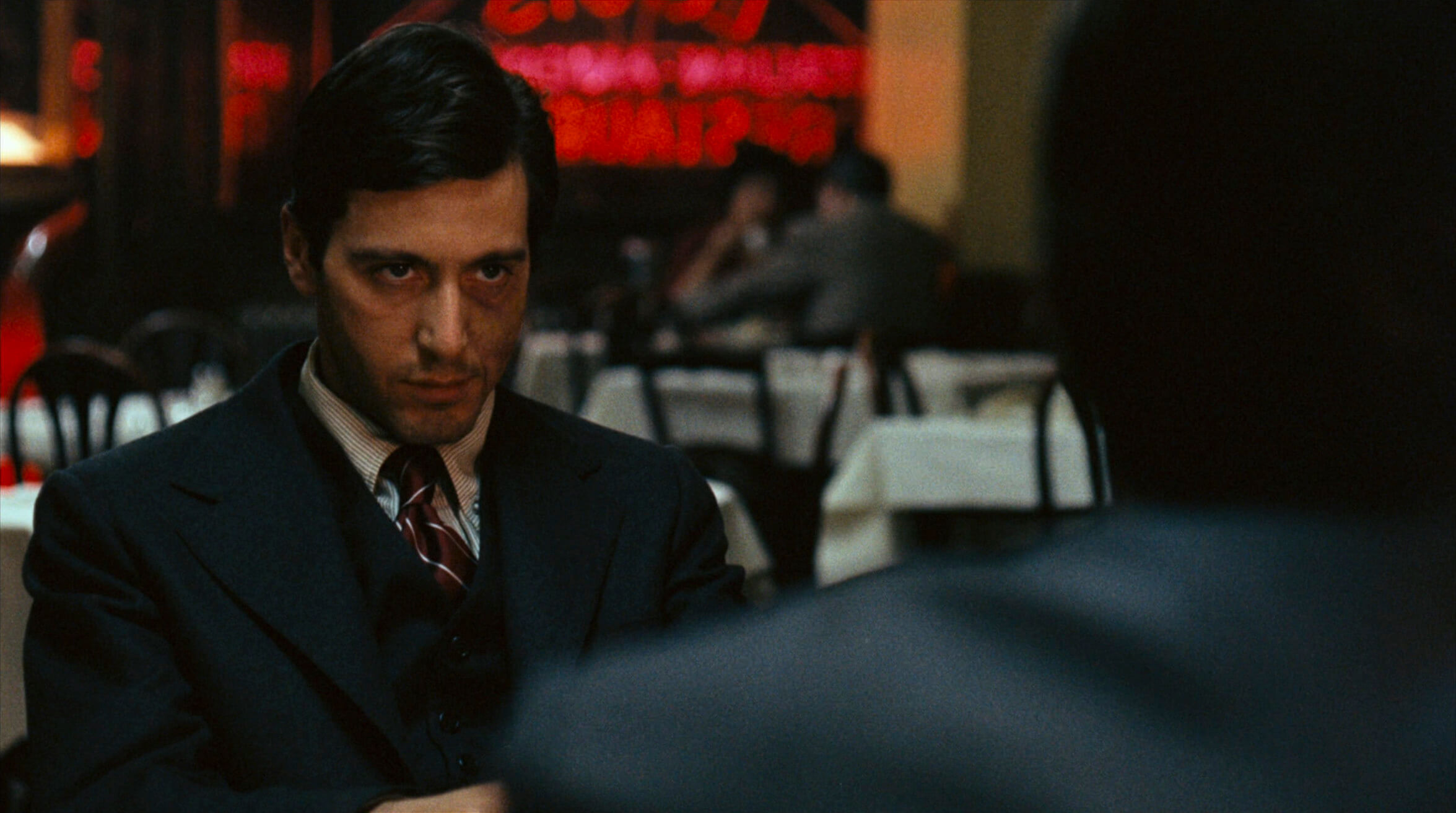
Case Study
Shot listing an over the shoulder shot
So how can you use an over the shoulder shot? To answer that, let’s look at the iconic interrogation scene from The Dark Knight. Rather than a standard OTS shot conversation, the camera repeatedly crosses the axis of action for a more destabilized situation.
Click the shot list below to take a closer look at the scene. How does Nolan use over the shoulders? When does he decide not to?
While the over-the-shoulder shot might seem simple at first glance, it’s a remarkably versatile storytelling tool.
Let’s take a closer look at how this familiar framing can shape perspective, reveal emotion, and heighten the drama.
Unexpected combos
How can you use an over the shoulder shot with other camera techniques?
How to combine an over-the-shoulder shot
Over-the-shoulder shots are a core component of visual storytelling, and they become even more dynamic when paired with complementary techniques. Layering them with movement, composition, or editing choices can enhance emotional beats and elevate character interaction. Here are a few ways to creatively build on the over-the-shoulder shot:
- Push-In: Slowly dollying forward while maintaining the over-the-shoulder frame can intensify focus and tension.
- Rack Focus: Shifting focus between the foreground (the shoulder) and the subject can add visual dynamism.
- Shot-Reverse-Shot: Alternating between over-the-shoulder angles allows for balanced dialogue coverage.
- Dolly: Moving laterally or in an arc around the characters can keep the shot dynamic without breaking spatial continuity.
- Crane: Lifting the camera from an over-the-shoulder into a higher angle can transition into a new visual beat.
Frequently asked questions about the over the shoulder shot
Position the camera behind one character, including part of their head and shoulder in the frame, while focusing on the other character or subject. Use a medium or medium-close lens and ensure eye-lines match when cutting between angles for continuity.
Use it during conversations, confrontations, or any moment where perspective and power dynamics matter. It's especially effective when you want to subtly align the audience with one character’s point of view.
There are many reasons you may want to use an over the shoulder. Here are a few:
Ground the viewer in a character's perspective
Create intimacy in dialogue scenes
Build spatial relationships between characters
It may be simple, but there are ways to mess up an OTS:
- Breaking the 180 rule
- Framing too wide or too tight
- Overusing it without variation
- Blocking the subject’s face with too much shoulder in the foreground
Over the shoulder is technically a shot, not just an angle. It describes a specific framing where the camera looks over the shoulder of one character, usually focusing on another subject in front of them. Of course, it does involve an angle, since the camera must be placed behind and slightly to the side of the character.
